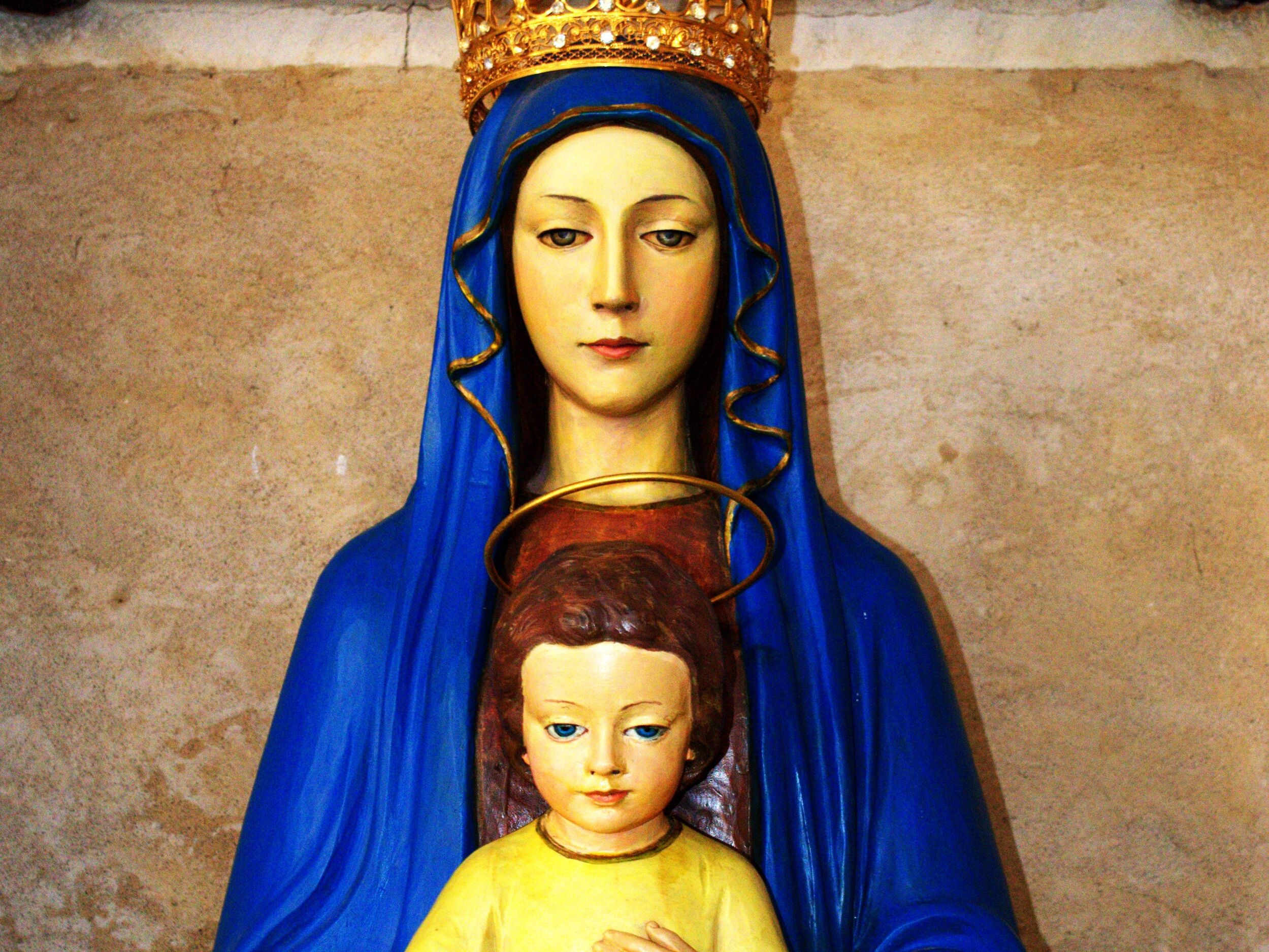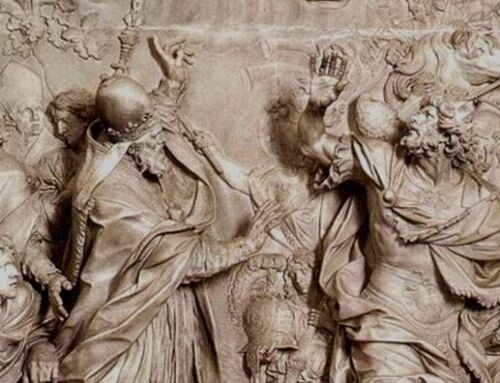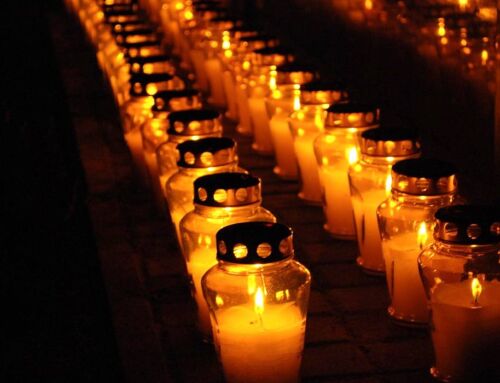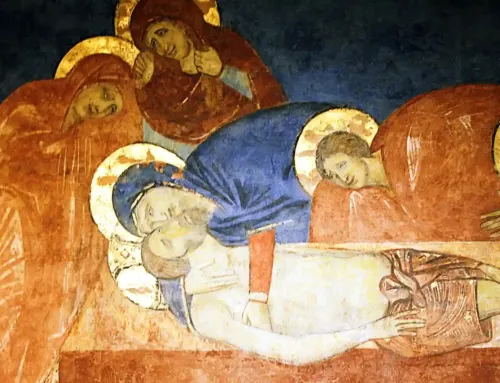My excellent Latin teacher in college caught me by surprise one day. I thought I’d impress him with my deep culture by telling him how much I liked listening to the Ave Maria in Latin.
He responded, “Oh really? Which one?”
(There I was – busted – I didn’t know there was more than one!)
The one I was familiar with was the one that just about everyone identifies as THE Ave Maria as I did – Franz Schubert’s – but, despite bursting my bubble of pretense, my professor had opened up a whole new horizon of beauty and truth for me.
Our Lady’s Birthday
Every year on September 8th the Church celebrates the birthday of the Mother of God.
We know nothing of the actual birth of Mary. Our understanding of the Nativity of Mary comes mostly from a 1st century non-biblical writing called the Gospel of James, which also gives us the names of Mary’s parents, Joachim and Anne.
This document was one of the numerous early Christian writings that did not get included in the Bible but whose contents still had some spiritual or moral value for Christians.
Despite the lack of historical information, the Church has always had a deep intuition about Our Lady’s birth which holds within itself numerous theological truths. In short, this understanding is
- That she was conceived and born in the natural course but was granted by God the privilege of being free of Original Sin from the moment of her conception;
- That her parents dedicated her to God from an early age (one tradition says that she was given to be raised in the Jerusalem Temple from age three); and
- That her birth occurred on September 8th.
The precise date of her birth developed in the Tradition over many centuries and was probably the result of the teaching about Mary’s Immaculate Conception. Counting forward nine months from the feast day of the Immaculate Conception (December 8th), we arrive at Our Lady’s birthday on September 8th: the Church is biologically correct, if nothing else.
The Hope of Our Hope
Christ our divine Savior is the eternal hope of every human being ever created. Mary does not stand in the exalted place that Christ alone occupies. Nor would she want to obscure His divine authority in any way. Yet, if Jesus’ birth is our ultimate hope, Mary’s birth is the hope of our hope.
She opened the door for the Redeemer – in fact, she was the door.
The great medieval theologian, St. Anselm (1033-1109 AD), celebrated the dynamic role of Mary in salvation history with astounding eloquence:
God, then, is the Father of the created world and Mary the mother of the re-created world. God is the Father by whom all things were given life, and Mary the mother through whom all things were given new life. For God begot the Son, through whom all things were made, and Mary gave birth to him as the Savior of the world. Without God’s Son, nothing could exist; without Mary’s Son, nothing could be redeemed. (Oratio 52; PL 956)
When she was born, the angels rejoiced in anticipation of the coming Savior. For this reason, Our Lady herself even prophesied that all true believers would call her blessed (Luke1:48) throughout history.
Generations of Praise
It’s no wonder that all generations have sung Mary’s praise in myriad ways, but most often with the words of her own prayer, the Hail Mary. Even those who don’t know Latin may be aware that the title Ave Maria is the Latin term for “Hail Mary”, the first two words of the prayer itself.
Let’s not delay in listening to the wonderful Ave Marias of our tradition that have filled many with increased devotion to the woman who stands at the very center of the mysteries of our faith. As you listen, remember that these exquisite compositions are not just music – they are sublime prayers.
My Latin teacher would be proud.
Franz Schubert’s Ave Maria (1825)
It is hard to believe that this Austrian genius of classical music lived such a short life (1797-1828, he was only 31 when he died). He composed over 1500 pieces of music in his brief career. Schubert’s Ave Maria is easily the most famous of them all, and the one most likely to make tears flow at funerals and weddings! Who better to offer this gift to Our Lady than Luciano Pavarotti, the world’s favorite Italian tenor? (Note: he sings the first verse in Italian followed by Latin. Break out the tissue.)
The Bach/Gounod Ave Maria (1859)
Charles Gounod (1818-93) was a 19th century French Romantic composer who superimposed a magnificently beautiful melody on the rhythmic Prelude No. 1 in C Major of Johann Sebastian Bach (1722). As soon as you hear the opening notes of the harp (which is Bach’s intro) you will likely respond as I did, “Ah, I know this beauty!” After hearing it sung in the rich tones of the fabulous New Zealand soprano, Dame Kiri Te Kánawa, it will be hard to bring yourself back to earth.
The Caccini/Vavilov Ave Maria (1970)
A lesser known but incredibly beautiful Ave Maria has been attributed to Italian Renaissance musician, Giulo Caccini (1551-1680), who is probably not the actual composer. It is generally believed that Russian guitarist, Vladimir Vavilov (1925-1973), composed it and attributed it anonymously in order to avoid religious censorship in the Soviet Union. Andrea Boccelli sings this version in his clear and resonant voice – it is truly breathtaking.
Listening to these magnificent works of music, I’m sure you’ll agree with me that there is no better way to wish Our Lady a happy birthday than to call her “blessed” with the Church’s tradition of sacred music.

Soul Work
Ask yourself today where the Virgin Mary fits into your Christian spirituality. We must each in our own way live that prophecy about Mary: “All generations will call me blessed.” Our Lady doesn’t press or demand us to pay attention to her. In fact, she wants us to focus on her Son and leads us to Him. St. Louis Marie de Montfort’s words are the perfect understanding of Mary’s role: “When we say Mary, she says Jesus.”
It’s the Marian spirituality of keeping one’s eyes fixed on Jesus that defines the true disciple. And, far from distracting from Jesus, all devotion to Mary solidifies our love for Him and His kingdom.
Let these Ave Marias deepen your devotion to Our Lady. Come back to them often. She is the woman of grace whose trust in God gave us our divine Savior. They are meant to tug at the heart strings because pure beauty always unites us to God and inspires us to live better lives.
———-
[This article is a reproduction of the Sacred Windows Email Newsletter of 09/05/21, so it does not end with the regular Soul Work section. Please visit our Newsletter Archives.]




Leave A Comment